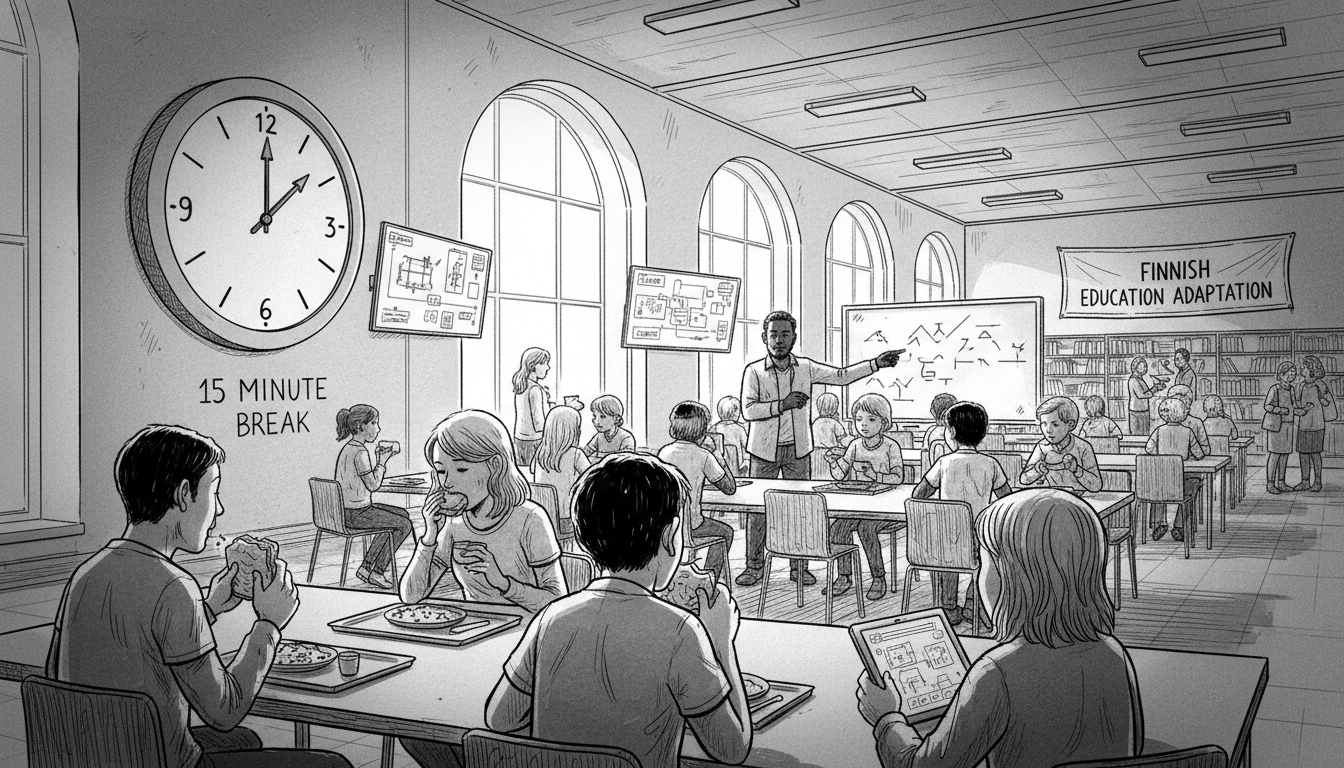A central Finnish comprehensive school operates under strict time constraints and resource limitations that impact daily education. At Keljonkankaa school in Jyväskylä, students navigate 15-20 minute lunch periods and prohibitions against writing in textbooks while learning in large groups of up to 40 pupils.
The school building opened during the pandemic with modern flexible learning spaces. Classrooms feature movable walls, stair seating, and shared learning areas. Yet practical challenges emerge in these innovative environments. Students sometimes sit on window ledges during math class when desks run short. Others face away from teaching screens in science rooms.
Student council president Oliver Tommola acknowledges the tight schedule. If there's any queue, you don't really have time to eat, he says about the brief lunch breaks. Sometimes students must rush directly to class after eating without a recess period.
Principal Tarja Seppälä-Pänkäläinen defends the arrangements. Very few use over 15 minutes for actual eating, she states. She suggests students could use preceding breaks for meals, though this has generated negative remarks in school systems because break times should be spent outdoors.
National education authorities recommend at least 30 minutes for school meals. Recent health surveys show decreasing numbers of students eating school food nationwide.
Teaching methods face their own constraints. Swedish teacher Laura Häkkinen explains students cannot write in workbooks, a policy lasting over ten years in Jyväskylä. Instead, they must use separate notebooks while following lessons. For some students, following teaching is difficult when they need to track the teacher, their book, and exercise notebook simultaneously.
Municipal spending data reveals Jyväskylä invests among the least in learning materials nationally at just 95 euros per student compared to the 145-euro national average.
Despite challenges, students express general satisfaction. Ninth-grader Eemi Erkkilä describes the school as safe and nice for studying. He acknowledges large groups sometimes disrupt focus. Peace doesn't always remain in a forty-person group, he observes.
University researcher Kreeta Niemi provides context about modern learning environments. Research hasn't been able to demonstrate that open learning environments improve learning, she notes. Large groups and spaces can hinder visibility and audibility during lessons.
Helsinki recently decided against building more open learning spaces, signaling a potential trend reversal in educational architecture. Many schools have retrospectively built walls, including another Jyväskylä institution.
The school represents Finland's ongoing balancing act between innovative educational approaches and practical classroom realities. While flexible spaces enable team teaching, they also demand careful management and sufficient resources to support diverse learning needs.

